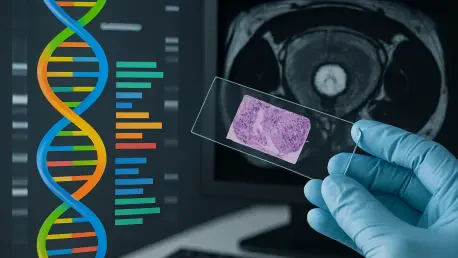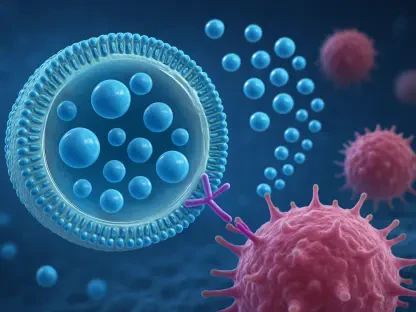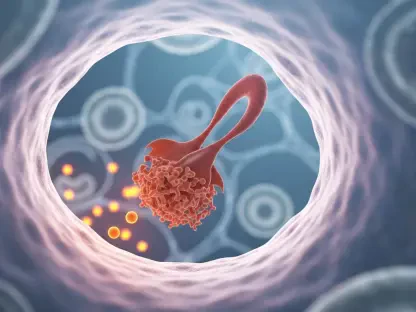Today, we’re thrilled to sit down with Ivan Kairatov, a renowned biopharma expert with extensive experience in research and development, and a deep understanding of technological innovation in the industry. Ivan has been closely involved in groundbreaking studies that are shaping the future of personalized medicine, particularly in oncology. In this conversation, we’ll explore the innovative PREDICT-RT study focused on high-risk prostate cancer, diving into how genomic testing is revolutionizing treatment approaches, the significance of tailoring therapies to individual patients, and the potential impact on future care standards.
Can you give us an overview of the PREDICT-RT study and explain why it’s such a significant step forward for men with high-risk prostate cancer?
Absolutely. The PREDICT-RT study, conducted under NRG Oncology, is a landmark trial that enrolled over 2,400 patients to evaluate tailored treatment regimens for high-risk prostate cancer. It’s significant because it uses genomic data to personalize therapy, which is a game-changer. High-risk prostate cancer diagnoses are increasing, and traditional treatments often come with heavy side effects or may not be optimally effective for every patient. This study aims to improve both outcomes and quality of life by adjusting the intensity of treatment based on the tumor’s genetic profile. It’s about giving the right treatment to the right patient at the right time.
What motivated the design of this trial to focus on customizing treatments using genomic risk scores?
The motivation came from a growing understanding that not all prostate cancers behave the same, even within the high-risk category. Genomic risk scores provide a window into the tumor’s aggressiveness, which can vary widely between patients. We’ve seen in other cancers that one-size-fits-all approaches often fall short, either over-treating some patients or under-treating others. The goal was to use cutting-edge genomic tools to stratify patients and test whether we could safely reduce treatment burden for some while intensifying it for others who need more aggressive intervention. It’s a step toward precision medicine in prostate cancer care.
How did the study manage to complete patient enrollment so much faster than expected?
Finishing enrollment two years ahead of schedule was a remarkable achievement, and it came down to a combination of factors. There was immense enthusiasm from both the research community and patients for a trial that offered personalized approaches. The study team worked tirelessly to streamline processes, ensuring that sites were well-supported with resources and clear protocols. Additionally, the increasing awareness of high-risk prostate cancer and the promise of tailored treatments likely motivated patients to participate. Collaboration across multiple centers was key—everyone was aligned on the importance of this work.
Can you explain what the Decipher Prostate Genomic Classifier is and how it plays a role in this study?
The Decipher Prostate Genomic Classifier is a sophisticated test that analyzes the genetic makeup of a patient’s tumor to predict how aggressive the cancer might be. It generates a score that reflects the likelihood of the cancer spreading or leading to worse outcomes. In the PREDICT-RT study, this score was used to divide patients into two groups: those with lower scores went into the de-intensification arm, potentially receiving less intense treatment, while those with higher scores were placed in the intensification arm for more aggressive therapy. It’s a critical tool for personalizing care based on biology rather than just clinical factors.
For patients in the de-intensification group, what was the primary aim, and how might reducing treatment duration impact their lives?
For the de-intensification group, which included patients with lower Decipher scores, the main goal was to see if we could reduce the duration of androgen deprivation therapy—or ADT—from 24 months to 12 months without compromising outcomes like metastasis-free survival. ADT can have significant side effects, including fatigue, loss of muscle mass, and emotional challenges. Cutting the duration in half could greatly improve quality of life for these patients while still controlling the cancer. We’re eager to see if this approach holds up in terms of long-term effectiveness.
Turning to the intensification group, why was apalutamide included in the treatment plan for those with higher risk scores?
For patients with higher Decipher scores or evidence of nodal involvement, we wanted to bolster the standard treatment of radiation and 24 months of ADT with apalutamide, a potent drug that blocks androgen receptors. Prostate cancer often relies on androgens to grow, and apalutamide enhances the suppression of this pathway, potentially slowing disease progression. The hope is that adding this drug will improve metastasis-free survival for these higher-risk patients, addressing the cancer’s aggressiveness head-on with a more robust regimen.
How did the study ensure fairness in assigning patients to different treatment groups?
Fairness was a priority, and the study used a rigorous stratification process to balance the groups. Patients were categorized based on their Decipher scores, but we also accounted for other factors like the type of radiation boost they received, whether they’d had prior pelvic treatment, and their overall health status through tools like the ACE-27 comorbidity index. After stratification, patients were randomly assigned to treatment arms within their respective groups—de-intensification or intensification. This method helps ensure that the results aren’t skewed by underlying differences between patients.
What were some of the challenges in running a trial of this scale with such a personalized approach?
Conducting a trial of this size with personalized treatment plans was no small feat. One major challenge was coordinating genomic testing across multiple sites to ensure timely and accurate results for patient stratification. We also had to educate both healthcare providers and patients about the role of genomic classifiers, as this isn’t yet standard in all settings. Logistically, managing such a large cohort and ensuring compliance with tailored regimens required constant communication and problem-solving. Thankfully, the dedication of the research teams and the support of advanced diagnostic partners helped us navigate these hurdles.
With high-risk prostate cancer diagnoses becoming more common, how do you think the results of this study might shape future treatment guidelines?
If the results of PREDICT-RT confirm that genomic-based stratification leads to better outcomes—whether through safer de-intensification or more effective intensification—it could redefine how we approach high-risk prostate cancer. Future guidelines might incorporate genomic testing as a standard step in treatment planning, moving away from blanket protocols to more individualized strategies. This could mean fewer side effects for some patients and better survival rates for others, ultimately raising the bar for care across the board.
What is your forecast for the role of genomic testing in prostate cancer treatment over the next decade?
I’m very optimistic about the trajectory of genomic testing in prostate cancer. Over the next decade, I expect it to become a cornerstone of diagnosis and treatment planning, much like it has in other cancers such as breast cancer. As technology advances, these tests will likely become more precise, faster, and more affordable, allowing broader access. We’ll also see integration with other data—like imaging or patient history—to create even more comprehensive risk profiles. Ultimately, I believe genomic testing will not only guide initial treatments but also help monitor disease progression and adjust therapies in real-time, truly personalizing care at every stage.









